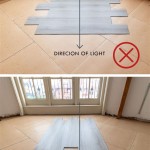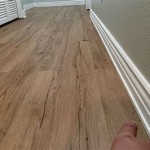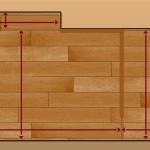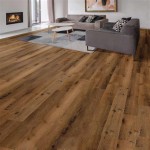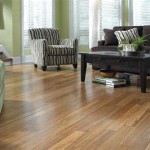Best Laminate Flooring for Radiant Heat
Radiant heating systems are growing in popularity due to their energy efficiency and comfortable warmth. If you're considering installing radiant heat in your home, you'll need to choose flooring that can withstand the unique demands of this heating system. Laminate flooring is a popular choice for many homeowners due to its affordability, durability, and ease of installation. However, not all laminate flooring is created equal, and some types are better suited for radiant heat systems than others.
Choosing the right laminate flooring for radiant heat requires understanding the properties that make it suitable for this application. Key factors to consider include the core material, thickness, and wear layer. This article will delve into the specific characteristics of laminate flooring that make it compatible with radiant heat, highlighting the best options available.
Understanding the Challenges of Radiant Heat
Radiant heating systems work by emitting heat through the floor, warming the room from below. This creates a unique set of challenges for flooring materials. One key challenge is the potential for expansion and contraction. As the floor warms and cools, it will naturally expand and contract. If the flooring material is not flexible enough to accommodate these movements, it can result in buckling, gaps, or other damage.
Another important consideration is the heat transfer. The flooring must be able to efficiently transfer heat from the radiant heating system to the room. This requires a material with good thermal conductivity. If the flooring is a poor conductor of heat, it will reduce the efficiency of the radiant heating system and lead to uneven heating.
Core Material: The Foundation for Radiant Heat Compatibility
The core material of laminate flooring plays a crucial role in its suitability for radiant heat. Traditionally, laminate flooring used high-density fiberboard (HDF) as the core material. While HDF is strong and durable, it can be susceptible to warping and buckling under the influence of radiant heat. This is because HDF has a relatively low thermal conductivity, which can lead to uneven heat distribution.
For better compatibility with radiant heat, look for laminate flooring with a core made from a material like
medium-density fiberboard (MDF)
. MDF has a higher thermal conductivity than HDF, allowing heat to transfer more efficiently. Additionally, MDF is less susceptible to warping and buckling than HDF, making it a suitable choice for radiant heating applications.Thickness: Balancing Stability and Heat Transfer
The thickness of laminate flooring is another critical factor to consider for radiant heat. Thicker laminate flooring can provide more stability and insulation, but they might also hinder heat transfer to the room. On the other hand, thinner laminate flooring may offer better heat transfer but may be less durable.
For optimal performance with radiant heat, aim for laminate flooring with a
thickness between 8mm and 12mm
. This thickness range provides a balance between stability and heat transfer. Laminate flooring with a thickness less than 8mm might not be as durable, while flooring thicker than 12mm can impede heat transfer.Wear Layer: Protecting Your Flooring from Everyday Wear
The wear layer of laminate flooring is the protective layer that shields the core material from scratches, dents, and other wear and tear. It's important to select laminate flooring with a
strong wear layer
for radiant heat applications. This is because the constant heating and cooling cycles can put extra stress on the flooring, increasing the risk of wear and tear.A higher wear layer rating (AC rating) indicates a more durable and resistant laminate flooring. Look for laminate flooring with an AC rating of
at least AC3 or AC4
, which are suitable for high-traffic areas. These higher ratings will provide superior protection against wear and tear, ensuring the longevity of your flooring.Additional Considerations
While core material, thickness, and wear layer are key factors, there are other aspects to consider when selecting laminate flooring for radiant heat. These include:
- Moisture Resistance: Radiant heat systems can increase the humidity levels in a room. Choose laminate flooring with moisture-resistant properties or consider using a moisture barrier beneath the flooring.
- Installation: The flooring must be installed properly to ensure optimal heat transfer. Adhering the flooring to the subfloor provides better heat transfer compared to floating installation techniques.
- Manufacturer Recommendations: Always check the manufacturer's recommendations regarding the suitability of their laminate flooring for radiant heat.
By carefully considering these factors, you can select laminate flooring that complements your radiant heating system and enhances the comfort and energy efficiency of your home.
.jpg?strip=all)
The Best Types Of Flooring For Radiant Heating

Laminate Flooring Over Radiant Heat Shaw Floors

Heated Vinyl Plank Flooring Everything You Need To Know

The Best Types Of Flooring For Radiant Heating

Heating Wood Floors 101 Everything You Need To Know Floorings

Heating Wood Floors 101 Everything You Need To Know Floorings

Best Underlayment For A Heated Floor Flooring

Best Types Of Flooring With Radiant Heat Home Pros

Heated Vinyl Plank Flooring Everything You Need To Know

What Is The Best Flooring For Underfloor Heating Warmup
Related Posts

